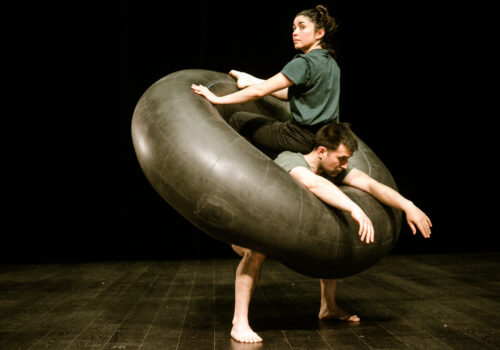AGENDA
LA CENTRAL DEL CIRC
TRAINING
CREATIVITY AND RESEARCH
The objective of the Transits residency program is to offer support to the companies that are in need of a physical space and support to carry out their artistic projects (research, creation, rehearsals, etc.), encouraging artists to take a more active approach to research and challenge their work.
In order to meet the needs of the stage in which the creative process of an idea or project finds itself, and enable true progression, we’re proposing various residency formats, accessible to artists and companies following a public call held in November.
However, the format and conditions of the residencies evolve each year, in order to maintain their relevance and be up to date with contemporary circus reality.
Here you can read the rules and requirements of the last public call.












Artists and companies in residence


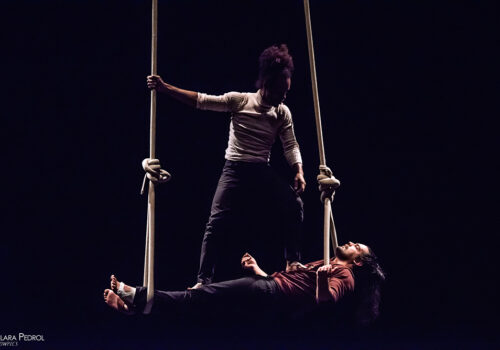


La companyia neix en 2018 a la ciutat de Rio de Janeiro. En aquest moment, Thiago Souza i Roberto Willcock són estudiants de l’Escola Nacional de Circ do Brasil. Tots dos s’adonen que comparteixen la passió per la tècnica de la corda llisa però, al mateix temps, un sentiment d’insatisfacció amb l’aparell.
Amb la idea de buscar altres possibilitats a més de la clàssica tècnica de corda, els artistes van iniciar la seva recerca. Les cerques pretenien plasmar les següents preguntes: com trencar amb la idea de verticalitat/altura en la corda llisa? Com fer nusos, no sols de forma vertical? El 2019 els artistes es muden a Itàlia per estudiar a la FLIC i treballen amb Flavio D’Andrea, Roberto Magro, Florent Bergal i Eva Ordoñez. Aíxí, treballen actualment en la que és la seva primera creació.
Cá Entre Nós
“Quan ens acomiadem amb la promesa de no estar lluny per més de 10 dies, vaig saber que no seríem capaços de complir aquesta promesa… Encara tinc espai per a tu, aquest tu en el qual t’has transformat lluny de mi… ”
La revelació de la intimitat, o millor dit, de la súper intimitat. Fora mida, però que succeeix aquí i ara, entre nosaltres. “Cá Entre Nós” exterioritza l’ambivalència entre poder i dependència, riscos i confiança en les relacions, que sorgeixen en un temps i un espai coincidents. “Cá Entre Nós” és una expressió brasilera que podríem traduir com “entre nosaltres”. Però no per casualitat, en portuguès, la paraula “nós” (nosaltres) també es pot traduir com a “nus”. Al mateix temps, “cá” (aquí) reforça la idea d’un aquí i un ara. Així, “Cá Entre Nós” és una narrativa creada a partir de la relació entre els cossos presents en escena i es desenvolupa a través, sobre i en funció de l’elaboració de nusos.
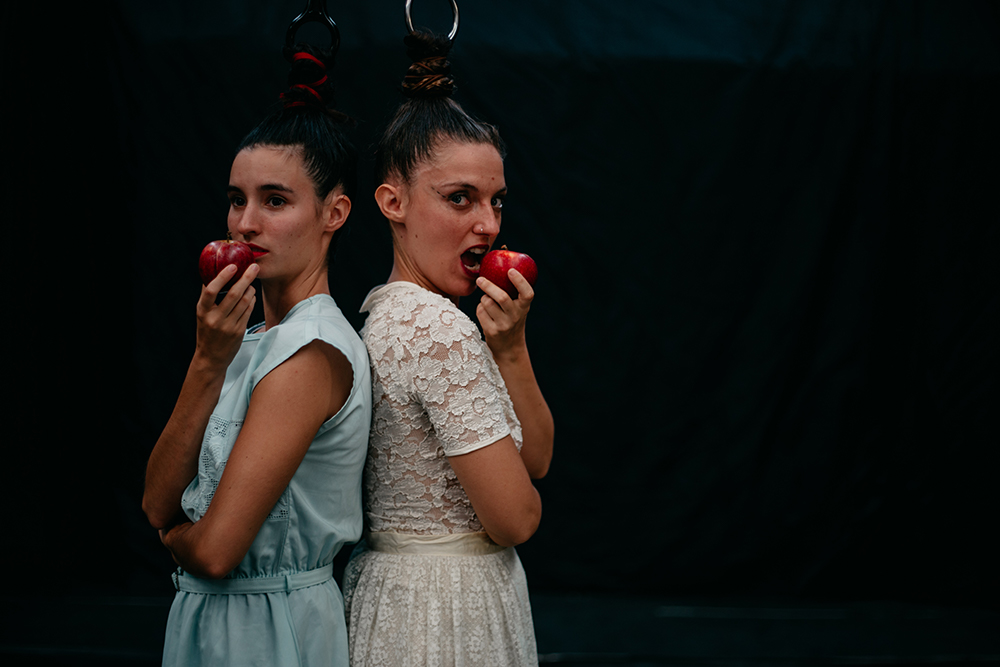


Elles
A multidisciplinary show. A combination of circus, movement and live music searching for a language that will define them.
They investigate identity and gender, treating them from a fresh point of view. A stage concert of electronic music where two people walk the scene in a continuous ecstasy and bewilderment, questioning their identities and their way of relating to each other. Questioning her identity as women and the clichés they are associated with. What is a woman? What is a man? What are we if we are nothing?
Out of control, they step on glass, they mix music live, they play instruments face down at several meters high, they suspend each other by the hair, they throw darts, they explode apples, they eat them and form body structures impossible to decode.
Picture: Mar Bautista
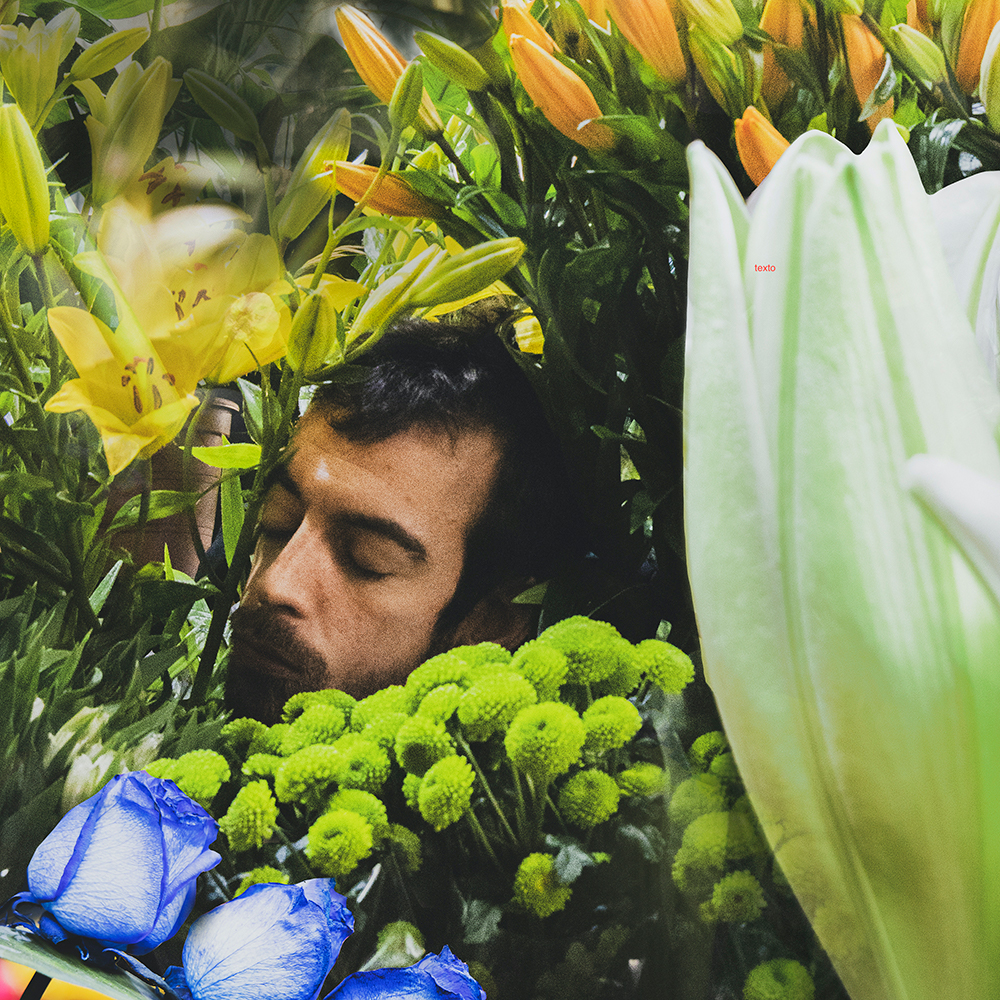


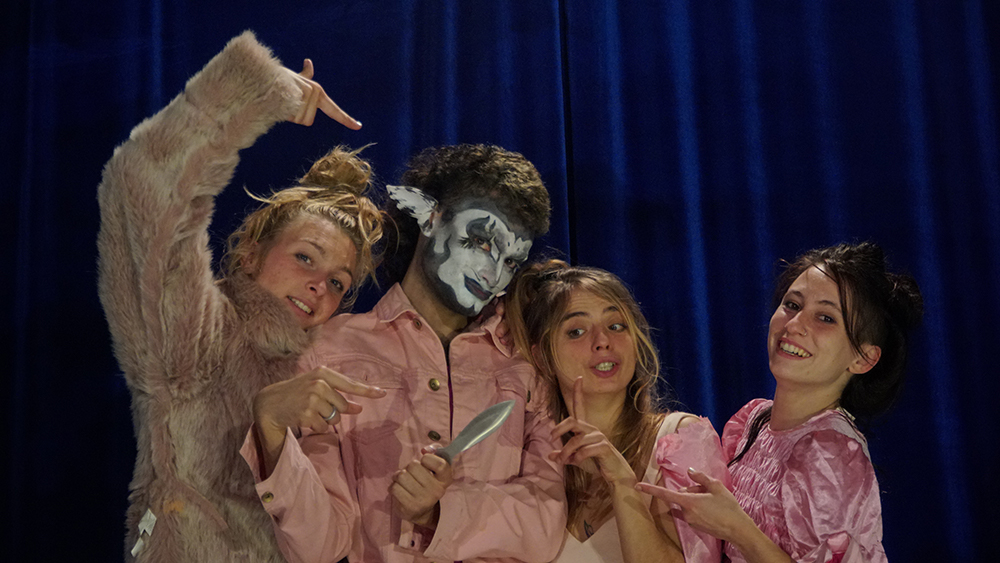


Niebieski
Four people enter a blue room, as a plane about to take off. A space of emotional management which reveals its system, adapting and offering what is necessary to modify and move freely within those aspects that society calls unworthy and secret.
They will appropriate symbols of popular culture through playing with the everyday objects that the room provides. A circuit where painfulness and dirtiness mutate into a ritual of initiation of which they were deprived. To develop a way to relate to the emblems of patriarchal binarism will lead to a collective narrative. They will put empathy into practice, to navigate all the processes of turning empowering everything that once was inappropriate.
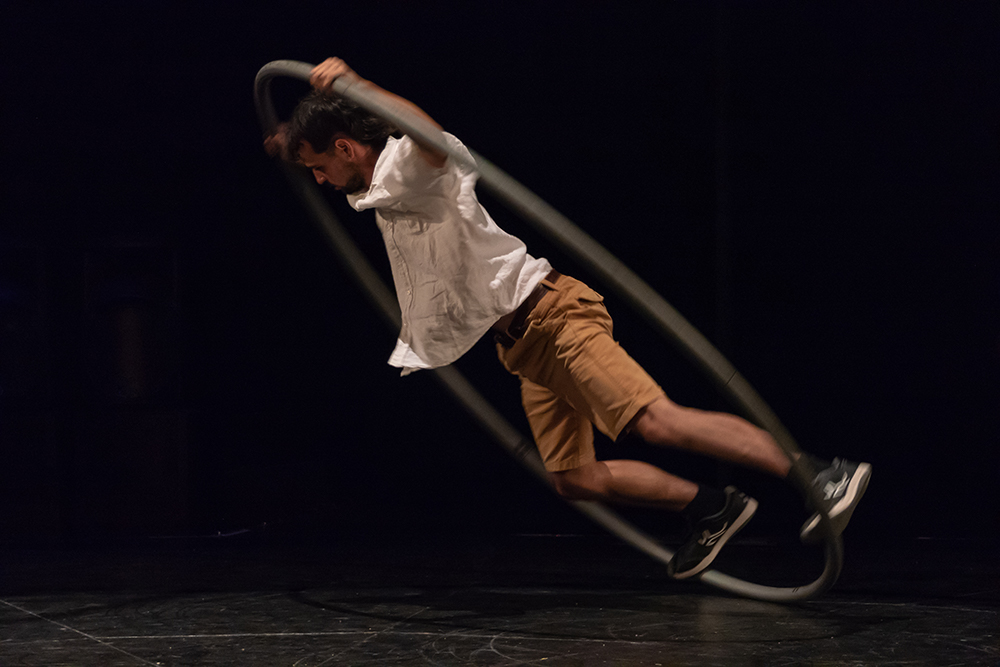


Pròxima Centauri
The scene is full of autumn leaves. A pendulum swings at ground level and removes the leaves with the air it generates. From here the staging plays between what is natural and simple and what is artificial and complex, through elements such as water, leaves, pendulum and a cyr wheel.
With the help of these elements, it explores the languages we use through science and art, seeking in creativity the common point between any scientific and artistic discipline. It takes as a reference the evolution of a star similar to the sun and is reflected in its vital phases from birth to death. Is science simply a way of understanding the art present in nature?
The piece is named after Proxima Centauri: the closest star to our solar system located about 4.2 light-years away and is part of a 3-star system, one of them very similar to our sun.
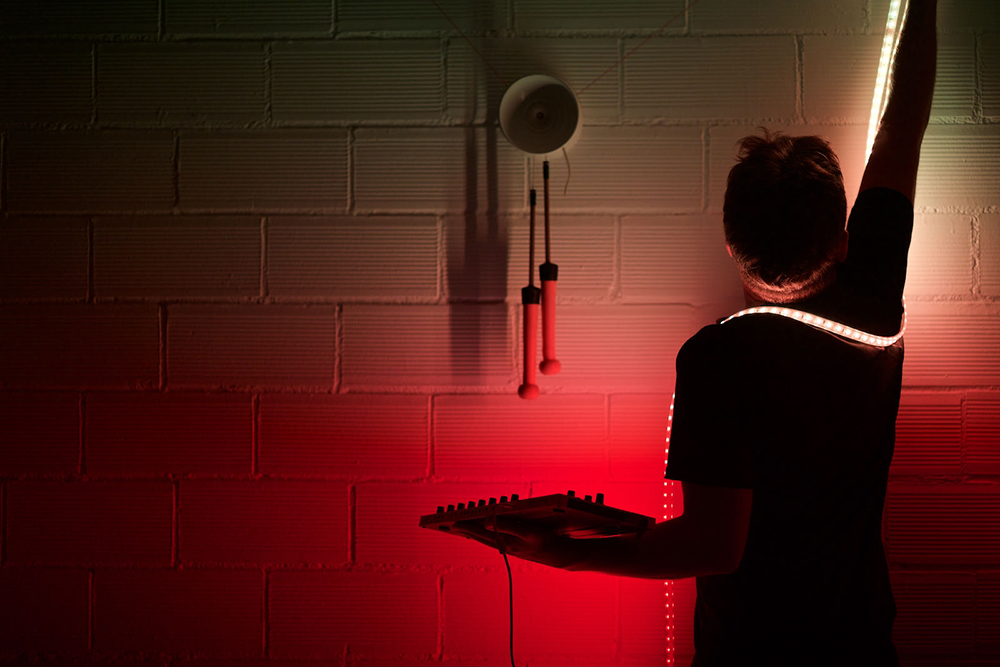


Polychromatic Void
For some time now I have been quite obsessed with ambient music and the generative systems that many sound landscapers use to reach new horizons and textures. After researching a lot about generative music, I decided to do the same with juggling, and look in the direction of a couple of subgenres that I currently call Ambient Juggling and Generative Juggling.
Ambient Juggling is an unpretentious juggling, it is an act that has as its engine the constant dissolution, it exists without having to stand out with respect to the environment. Generative juggling goes a step further, trying to understand the whole environment as a system that gives inputs and receives stimuli, and based on all these parameters it evolves towards unplanned places, but they can be bounded. Polychromatic Void is more aimed at “generative juggling”. Create a system between juggling, juggling, video, music, lighting, code and other elements, where everything is connected and in a constant dialogue.
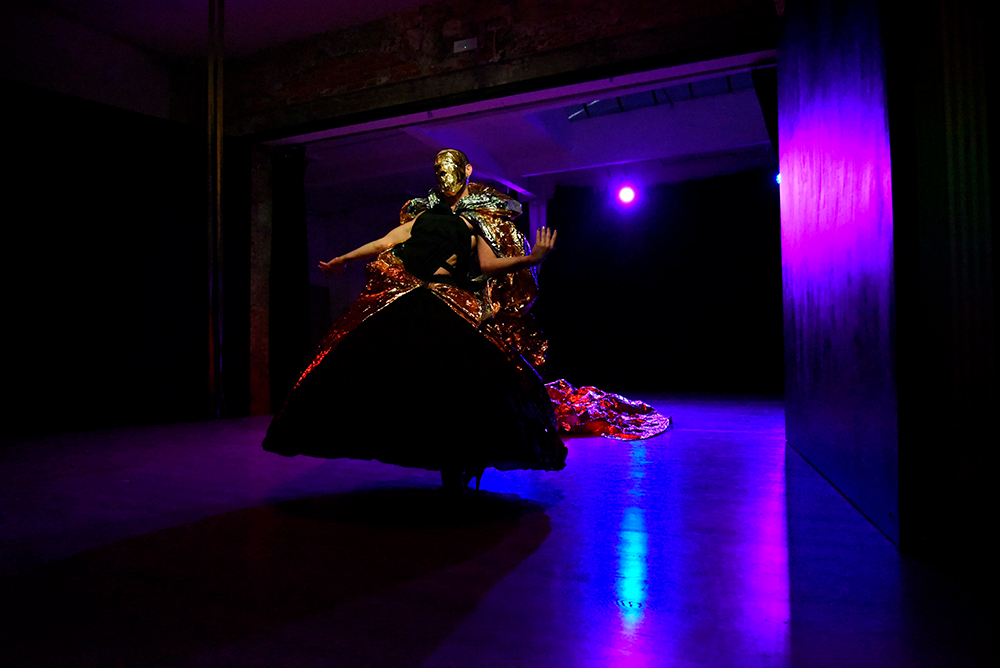


prince_LE_ss
A dark and disturbing tale about the end of a relationship. A sudden bereavement. Something that was there and now is not anymore. A failure. A mismatch. A failed happy ending.
What happens if the Princess finds herself ineluctably without (any) Prince?
Princess as an example, the object of a visual research on this archetype and its fairy-tale, oneiric and unreal environment reinterpreted through the black veil of mourning, obsession and desire, generic character protagonist of a story that wants to tell the attempt not to avoid what socially and emotionally is considered “suffering” that presents itself as a unique and compulsory path to reach a state of lasting well-being.
Discovering that Prince Charming, the longed-for salvation, is not to be found in someone else, in something external, but only in the acceptance of loss, in letting go of what we were convinced was necessary to our existence, in abandoning everything to rediscover ourselves naked and strong enough to live, alone, our own happy ending.
Pivture: Li Mi
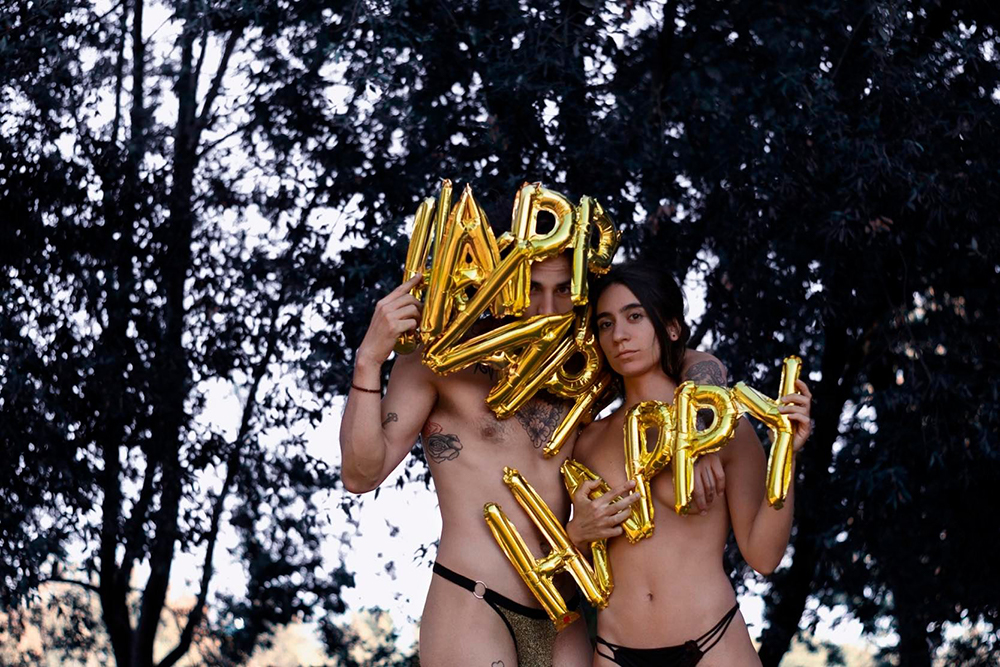


‘Happy’
‘Happy’ is a manifesto. A rupture in the conception of life; the possibility for each person to de-construct his own way of existence. The style, the aesthetic of opposites who meet and converse. It is our naked, rebellious, innocent, spiritual, lucid, and above all human being. A hymn to freedom reconnecting with cruelty. We put our limits, accidents and despair at stake; we claim our dissident, deadly and vulnerable existence as a form of circus.
By accepting who we are in the present moment, the fear of death escapes us. In each situation: new possibilities of changes, reconfiguration and metamorphosis. When all the doors are open, when all the anchors drown and nothing holds us to the ground, we can finally dance without falling.
Picture: Carolina Castro



Animus Anima
Animus Anima talks about being molded and cohabited by a pairing of energies that can take different names: hot/cold, outside/inside, ying/yang, feminine/masculine. It talks about his relationship with society, with preconceptions, with standards of beauty and social pressures. Submissive to an evolution which pushes it to go backwards, this being lives a true freeing in front of the public, making a comeback to the primitive.
An autobiographical research conceived as a cheerful provocation, to build complicity with the audience through humor. Through the pole, a place where everything merges and acquires a sense. And through the Disco Dance, discipline that embodies speed and exhibition in front of a jury, represented here by the audience itself. All this will be in order to show to what extent the judgments and the social pressures lead this being to transform, embellish and camouflage obsessively its body, until falling into a grotesque aesthetic.
Foto: Alian Richard
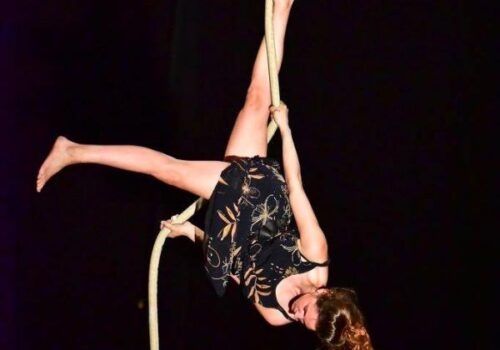


‘Trying to say what’
Specializing in rope and aerial silks, Gaia Panero is currently in the process of creating the piece ‘Trying to Say What’. The research she seeks to develop has started as a physical and technical research around the discipline of rope, transforming it into an investigation into the possible relationships between the rope, the artist’s body and the space that hosts them.
From this first research, the need has arisen to create a structure that is at the same time performance space and art installation, where circus art interacts with architecture. It will be a tensegrity structure, a name derived from the words “tension” and “integrity” and will be sustained by opposing forces.
